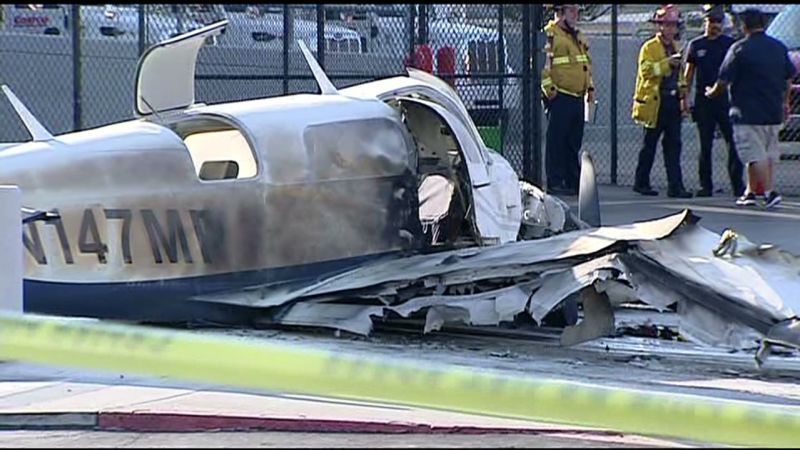Editor's note: These are commercial passenger aircraft accidents with more than 200 deaths or accidents that are otherwise notable. Accidents resulting from terrorist or military actions are not included.
cnn
—
Here's a look at commercial passenger aircraft accidents. For accidents caused by military acts or by terrorism, see Basic Facts on Terrorism and War-Related Air Accidents.
On August 12, 1985, the highest death toll in a single commercial airliner accident occurred when a Japan Air Lines Boeing 747 crashed into Mount Ogura in Japan, killing 520 passengers and crew members.
The deadliest commercial airliner accident occurred on March 27, 1977, when two Boeing 747s collided on a runway on the Spanish island of Tenerife, killing 583 people.
December 14, 1920 – Believed to be one of the first known accidents of a commercial passenger airliner, a British Handley Page HP-16 en route to Paris from London crashes just after takeoff, killing four of the eight people on board.
March 3, 1974 – 346 people die when a Turkish Airlines DC-10 crashes in France because the cargo door was not completely closed.
March 27, 1977 – A KLM Royal Dutch Airlines Boeing 747 crashes into a Pan American World Airways Boeing 747 at Los Rodeos Airport in Tenerife, Canary Islands, killing a total of 583 (335 deaths on the Pan American plane and the 234 passengers plus 14 crew members on the KLM plane). The accident occurs when the KLM plane begins its takeoff while the Pan American plane is still on the runway.
May 25, 1979 – An American Airlines DC-10 crashes after taking off from Chicago O'Hare International Airport, killing 271 people on board and two others on the ground. During takeoff, an engine falls off the left wing; The FAA later blames American Airlines' maintenance techniques for the accident.
November 28, 1979 – An Air New Zealand DC-10 crashes into Mount Erebus in Antarctica, killing 257 people. The accident is believed to have been due to a navigation error.
August 19, 1980 – Shortly after takeoff, a Saudi Arabian Airlines Lockheed L-1011 begins its return to Riyadh International Airport due to a fire in the aft cargo compartment. The pilot lands the plane safely and continues to a taxiway. All 301 passengers and crew members die in the fire before evacuation begins.
August 12, 1985 – The highest death toll in a single commercial airliner crash occurs when a Japan Air Lines Boeing 747 crashes into Mount Ogura in Japan, killing 520 passengers and crew members.
April 28, 1988 – An Aloha Airlines Boeing 737 decompresses and causes a mid-air explosion. The pilot manages to land the plane safely, but one person is killed and dozens of passengers and crew members are injured. The NTSB later blames the airline's maintenance program for failing to address signs of fatigue and metal spalling that ultimately caused the fuselage to separate. As a result of this incident, Congress passes the Aviation Safety Investigation Act of 1988.
May 26, 1991 – Fifteen minutes after takeoff, a thrust reverser is deployed on Lauda Air Boeing 767 flight 004. The plane crashes 70 miles northwest of Bangkok, Thailand. All 223 passengers and crew die.
July 11, 1991 – The landing gear of a Nigeria Airways DC-8 catches fire shortly after takeoff and, upon returning to Jeddah Airport, Saudi Arabia, the plane crashes, killing all 261 people on board.
April 26, 1994 – China Airlines Airbus A300 crashes on approach to Nagoya airport, Japan, killing 264 people
July 17, 1996 – TWA Flight 800, a Boeing 747, explodes in midair and crashes off the coast of Long Island, New York. All 230 people on board die. The NTSB rules that the explosion was caused by faulty wiring that ignited a central fuel tank.
November 12, 1996 – At the airport in New Delhi, India, a mid-air collision occurs between a Saudi Arabian Airlines 747 and a Kazakhstan Airlines II-76. All 349 people traveling on both planes die.
August 6, 1997 – A Korean Airlines Boeing 747 crashes in the Guam jungle, killing 228 people.
September 26, 1997 – A Garuda Indonesia Airlines Airbus A300 crashes in Buah Nabar, Indonesia, killing 234 people.
February 16, 1998 – China Airlines Flight 676 from Indonesia to Taiwan requests another landing approach at Taipei International Airport. In the process of turning around, the plane crashes into a neighborhood, killing 203 people, including seven on the ground.
September 2, 1998 – A Swissair MD-11 crashes off Nova Scotia, Canada, killing 229 people. The Canadian Transportation Safety Board later concludes that flammable material and faulty wiring sparked a fire that spread beyond the crew's control.
October 31, 1999 – EgyptAir Flight 990, bound for Cairo from New York, crashes into the Atlantic Ocean off the coast of Nantucket, Massachusetts, sinking 14,000 feet in 36 seconds. All 203 passengers and 14 crew members are killed. The U.S. National Transportation Safety Board determines that the crash was the result of the co-pilot's actions, but cannot say why. It is widely believed that the co-pilot deliberately caused the crash, but Egyptian authorities dispute this and reject the NTSB's findings.
July 25, 2000 – The Air France Concorde, en route to New York, crashes into a Paris hotel shortly after takeoff, killing 113 people (109 on board and four on the ground).
November 12, 2001 – An American Airlines Airbus A300 crashes in Belle Harbor, Queens, shortly after taking off from JFK Airport, killing a total of 265 people, including five people on the ground.
May 25, 2002 – A China Airlines Boeing 747 crashes in the Taiwan Strait 20 minutes after takeoff, killing all 225 people on board. The accident is later attributed to metal fatigue caused by previous faulty repair work.
January 15, 2009 – US Airways Flight 1549 lands on the Hudson River in New York City approximately three minutes after takeoff and after colliding with a flock of birds. All 155 on board survive. The flight's pilot, Chesley B. “Sully” Sullenberger, emerged as a hero and was praised by passengers, officials and aviation experts.
June 1, 2009 – Air France Flight 447 from Rio de Janeiro to Paris with 228 passengers and crew is lost over the Atlantic. The first bodies are recovered on June 6, approximately 600 miles off the northern coast of Brazil. On July 5, 2012, France's Research and Analysis Office publishes a report concluding that a series of pilot errors and a failure to react effectively to technical problems caused the crash of Air France Flight 447.
March 8, 2014 – Malaysia Airlines Flight 370 disappears from radar after taking off from Kuala Lumpur bound for Beijing. After more than 10 months of searching for the plane, on January 29, 2015, the Malaysian government officially declares the loss of MH370 an accident and all passengers and crew, 239 people in total, are presumed dead. On July 30, 2018, announcing the release of a safety investigation report, Malaysian authorities said they had been unable to determine the cause of the plane's disappearance, although they ruled out several possibilities.
March 24, 2015 – Germanwings Flight 9525 crashes in the French Alps after taking off from Barcelona, Spain, bound for Dusseldorf, Germany. All 150 people on board die. On March 26, 2015, authorities say co-pilot Andreas Lubitz, 27, deliberately crashed the plane after locking the pilot out of the cockpit. Further investigation reveals that he had suffered from depression in the past.
March 10, 2019 – A Boeing 737 MAX 8 crashes in Ethiopia, killing all 157 people on board, marking the second time in less than six months that one of the planes has crashed within minutes of takeoff. The Lion Air Boeing 737 Max 8 flight crashed over the Java Sea last October, killing 189 people. Both accidents are under investigation and there is no evidence of a link between the two, but similarities between the incidents have caused caution among some aviation authorities and airlines. On April 4, 2019, according to Boeing, a preliminary report on the Boeing 737 MAX 8 crash in Ethiopia “contains flight data recorder information indicating that the aircraft had an erroneous attack sensor entry angle that triggered the function of the Maneuvering Characteristics Augmentation System (MCAS). during the flight, as he had done during Lion Air flight 610.”
March 21, 2022 – A China Eastern Airlines plane crashes in the mountains of southern China's Guangxi region, killing all 132 people on board. On May 17, the Wall Street Journal reports that black box data recovered from the flight suggests that someone in the cockpit intentionally brought down the plane.












